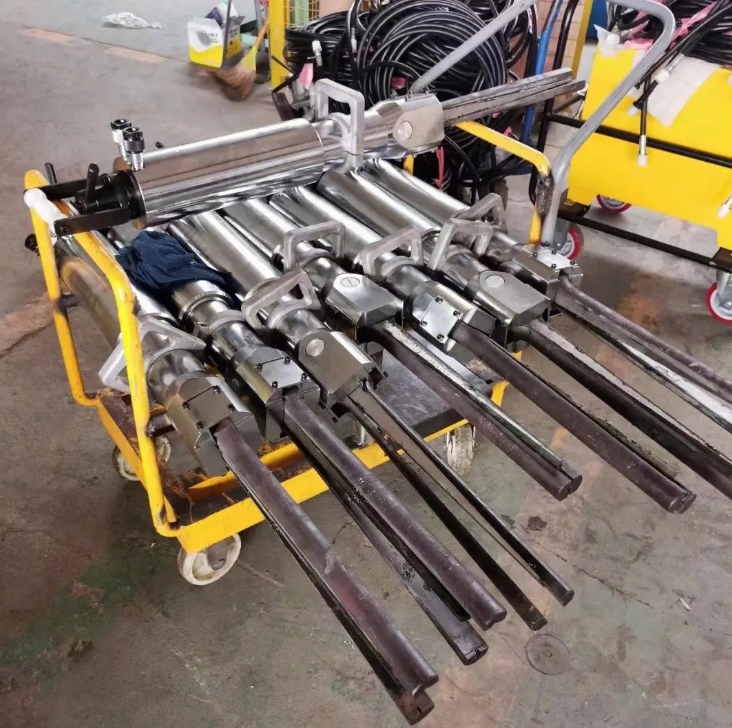Advantages and disadvantages of hydraulic rock splitting equipment
In the competitive landscape of hydraulic rock splitting equipment, distinguishing between high-quality and substandard products is crucial for clients seeking efficiency and reliability. At Gaea Rock, we emphasize the importance of understanding the key factors that influence the performance and practicality of hydraulic rock splitting: the splitting force and the weight of the equipment. Here, we delve into a detailed analysis of these factors, showcasing our commitment to innovation and quality in our product offerings.
Splitting Force: The Heart of Efficiency
The splitting force of a hydraulic rock splitting is paramount, determining its ability to efficiently and effectively split rock or concrete. This force is generated by the hydraulic pressure system, consisting of a pump station and a splitter. High-pressure oil from the pump station drives a piston within the cylinder, exerting a massive force on a set of wedges that drives the central wedge forward, causing the material to split. The magnitude of this force is determined by the size of the cylinder (specifically, its internal diameter), the quality of the wedges, and the hydraulic system's efficiency. A larger cylinder diameter results in a higher splitting force, provided that the components are of high quality and designed to maximize the force transfer.
At Gaea Rock, our hydraulic rock splitting are available in cylinder diameters of 80, 90, and 105 mm. We offer models in steel and aerospace-grade aluminum, with our 105 mm diameter series exclusively using aerospace aluminum to reduce weight without compromising strength.
Weight: The Measure of Portability and Strength
The weight of a hydraulic rock splitting is a critical factor for operational efficiency, affecting the ease of handling, transportation, and overall user fatigue. In the industry, there is a misconception that heavier splitters are inherently more robust or capable. However, the truth lies in the material's quality and the engineering precision. Heavier models often indicate the use of inferior materials requiring greater thickness to withstand the hydraulic forces.
Gaea Rock takes pride in using aerospace-grade aluminum for our splitters, significantly reducing weight while maintaining strength and durability. This material choice, combined with our advanced manufacturing techniques, allows us to produce lighter splitters that are easier to handle and transport, thereby enhancing operational efficiency and reducing labor intensity.
For example, comparing models with a pressure of 63 MPa, a 90 mm cylinder diameter, and a 200 mm stroke, typical market offerings weigh around 80 pounds. In contrast, Gaea Rock's steel model weighs approximately 70 pounds, and our aerospace aluminum model weighs around 45 pounds. Similarly, for our 80 mm diameter models under the same pressure and stroke conditions, competitors' products weigh about 72 pounds, while ours weigh around 60 pounds in steel and 35 pounds in aerospace aluminum. This reduction in weight significantly lessens worker fatigue, leading to increased productivity and efficiency on the job.
Conclusion
Gaea Rock stands at the forefront of innovation in the hydraulic rock splitting market. By focusing on the critical aspects of splitting force and equipment weight, we ensure our products offer the best balance of efficiency, durability, and ease of use. Our commitment to quality materials, such as aerospace-grade aluminum, and precise engineering reflects our dedication to providing superior solutions that meet the demanding needs of our clients.





